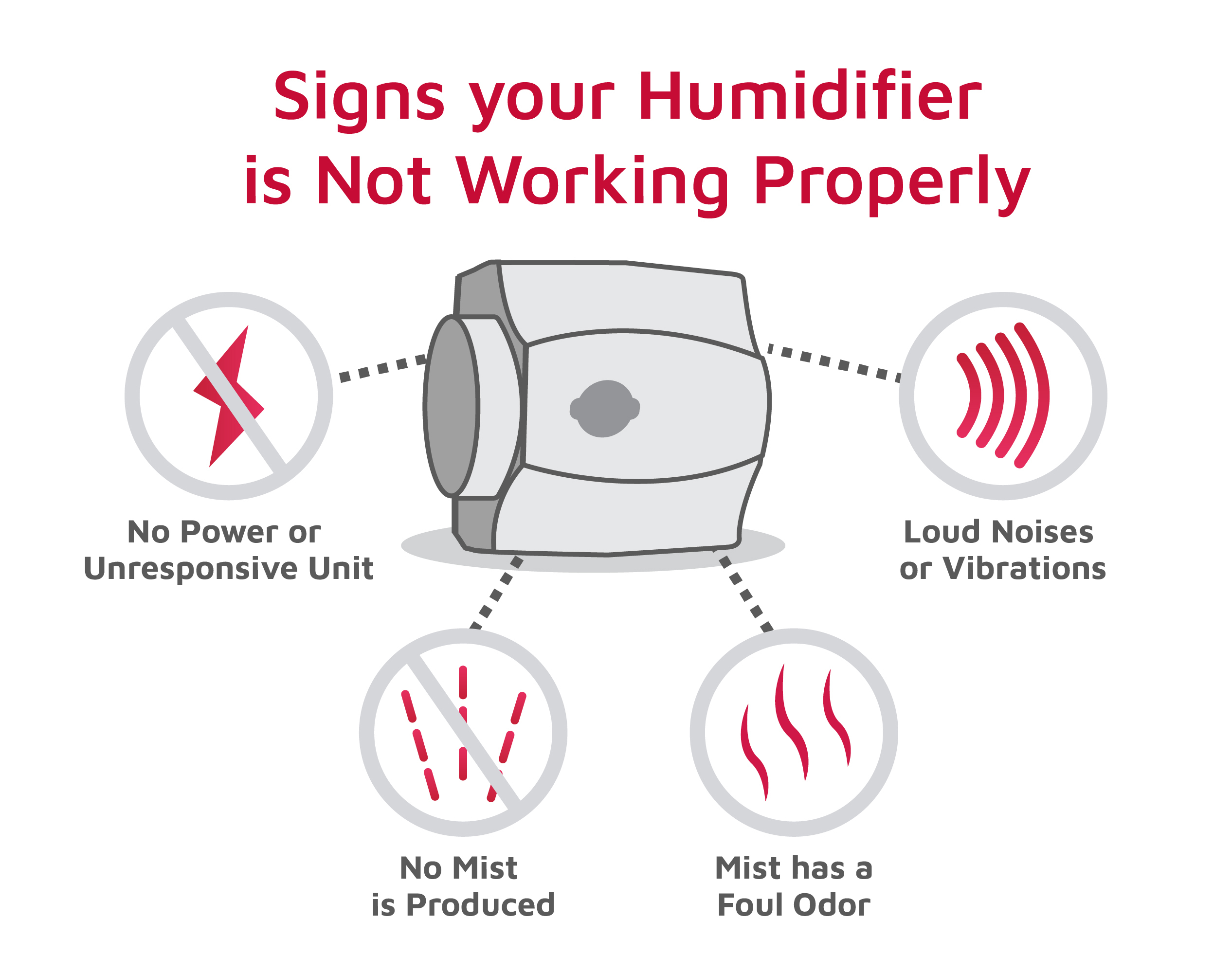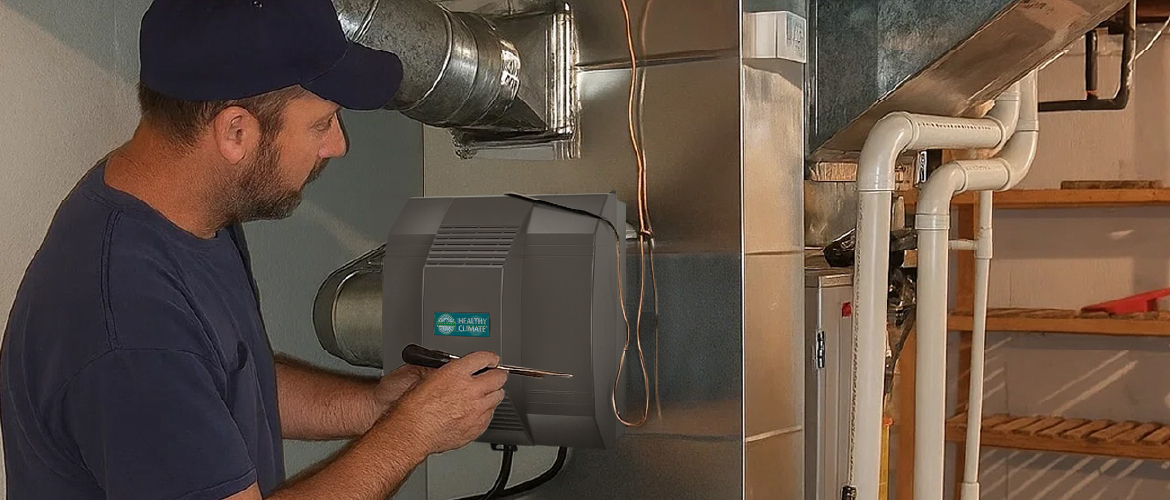Understanding Humidifiers
Balanced humidity helps prevent dry skin, reduces respiratory irritation, and keeps wood floors and furniture from cracking. Too little humidity can also make the air feel colder than it actually is, forcing your furnace to run harder than necessary.
There are two basic types of humidifiers—standalone and whole-home. While their design is usually similar, their application is very different. Standalone humidifiers, as the name suggests, require no installation. Whole-home solutions, on the other hand, are installed in-line as a part of your overall HVAC system and should be installed by a professional to ensure proper operation and efficiency.
- Basic components
Most humidifiers include a water reservoir, a wick or water panel, a fan or heating element, and for standalone humidifiers, a control panel. Whole-home solutions such as Lennox Healthy Climate humidifiers don’t include a water reservoir or wick. They are designed to operate water-free, reducing the possibility of mold formation within the unit which can be unhealthy and cause foul odors.
- Different types of whole-home humidity control and how they work
- Steam humidifiers boil water to create vapor, which is then distributed through your ducts.
- Bypass humidifiers use your furnace’s warm air, passing it over a water panel before circulating it through the house.
- Fan-powered humidifiers rely on a built-in fan to blow air over a moistened pad, adding moisture directly into the airflow.
Each type has unique maintenance needs, but all are designed to relieve dryness and protect your home’s furnishings and air quality.
Balanced humidity helps prevent dry skin, reduces respiratory irritation, and keeps wood floors and furniture from cracking. Too little humidity can also make the air feel colder than it actually is, forcing you to run your furnace harder than necessary.
Common Humidifier Problems
Recognizing when your humidifier isn’t performing efficiently can go a long way toward keeping your home healthy and comfortable. Here are a few things to look for to keep yours operating properly.
- Loud noises or vibrations
For humidifiers that have fans, clattering, rattling, or humming sounds usually point to loose parts or a failing fan motor. Inspect the housing and tighten any loose screws. Persistent noise may indicate a problem that requires professional service.
- Foul odor
If the air coming out of your humidifier or your vents has a foul or strange smell, that would indicate contaminants in the water. This can mean mold, bacteria or mineral build up—all things that can hamper the operation of your humidifier. Changing the water and cleaning the tank regularly can help prevent this issue.
- Unit runs but humidity isn’t maintained
This is one of the most common homeowner complaints. The reasons may include:
-
- Clogged or dirty filters
- Mineral buildup blocking water flow
- A closed or obstructed water valve
- Low water in the reservoir
- No power or unresponsive standalone unit
Obviously, if your standalone humidifier doesn’t turn on, something is wrong. The culprit may be simple: a tripped circuit breaker, a disconnected power cord, or a faulty switch. Always start by confirming the power source before assuming a major repair is needed.
Because whole-home systems are wired directly into your HVAC system and controlled by your thermostat, loss of power or an inoperative humidifier won’t be readily observable. Depending on your system, your thermostat may alert you to a power issue. If not, a sudden change in humidity readings will tell you your humidifier isn’t working.
Cleaning the unit and ensuring the water supply is open often resolves the issue. If not, internal components may need attention.

Step-by-Step Troubleshooting Guide
Before calling in a technician, a few simple checks can often get your humidifier running again:
- Check the power supply
- Confirm the plug is secure in a working outlet.
- Make sure the power switch is turned on.
- Inspect your circuit breaker or fuse box for a tripped breaker.
- Inspect the water source
- Fill the reservoir to the recommended level.
- For whole-home systems, confirm the water supply line is connected and not kinked.
- Ensure the saddle valve (the small valve connecting the water line) is open.
- Clean the unit
- Empty and rinse the tank regularly to prevent mineral buildup.
- Wipe down surfaces to reduce mold and bacteria growth.
- Clean or replace filters according to manufacturer instructions.
These steps resolve many basic issues and keep your humidifier performing efficiently.
When to Seek Professional Help
Not every problem can be solved with a screwdriver and a vinegar rinse. Signs it’s time to call in a professional include:
- Leaks or pooling water around the base of the unit
- Persistent malfunctions even after cleaning and filter changes
- Electrical issues such as frequent breaker trips or burnt smells
- Internal damage like cracked housings or broken components
A qualified technician can inspect wiring, test control boards, and make repairs safely. Professional maintenance also ensures your humidifier integrates properly with your HVAC system, maximizing both comfort and efficiency.
Regular care can keep your humidifier reliable season after season:
- Clean the unit weekly during peak usage season. This can vary based on where you live and your humidity preferences.
- Replace filters or pads at least once per year.
- Monitor indoor humidity with a hygrometer and adjust settings as needed.
- Schedule annual maintenance to catch issues early.
A humidifier may not seem like the most complex piece of home equipment, but when it isn’t working properly, the effects are hard to ignore. From cracked furniture to persistent dry air, small problems with your unit can ripple across your home’s comfort. By taking a little time to troubleshoot, keeping up with cleaning and filter changes, and knowing when to call in a professional, you can keep your humidifier working reliably through the driest months of the year—so your home feels as comfortable as it should.

